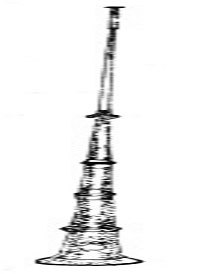Tongqin material and structure
Tongqin is also known as "mang tube", "copper winter", "copper hole", "big copper horn" and so on. "Tongqin" in Tibetan means a large size. The Mongolian people call it "Bili", and the Chinese call it a large tube, a long horn, and a small copper horn. It is a very important bass instrument in Lamaist bands. This musical instrument has a history of at least 700 years in Tibetan areas. It was first introduced to Inner Mongolia along with Lamaism in the second half of the 16th century.

The barrel Qin is made of copper (very few silver), which is popular in Tibetan areas. The upper section is the thinnest and the lower section is the thickest. When not in use, the upper and middle tubes can be folded one by one and placed in the lower tube.
When playing, pull out and fix all the horn pipes of the horns. The length of the folded tube is equivalent to about 1/2 of the full length after it is fully pulled out. The top of the upper section of the horn is fixed with a mouthpiece, and the mouthpiece has two types: cup-shaped and flat mouth. There is no sound hole in the body of the whole tube. The length of the bottom tube is the longest, and the diameter of the tube gradually increases. The lower end forms a thick bell mouth, and a copper ring is attached to the outside of the mouth for tying.
 渝公网安备 50010702504639号
渝公网安备 50010702504639号